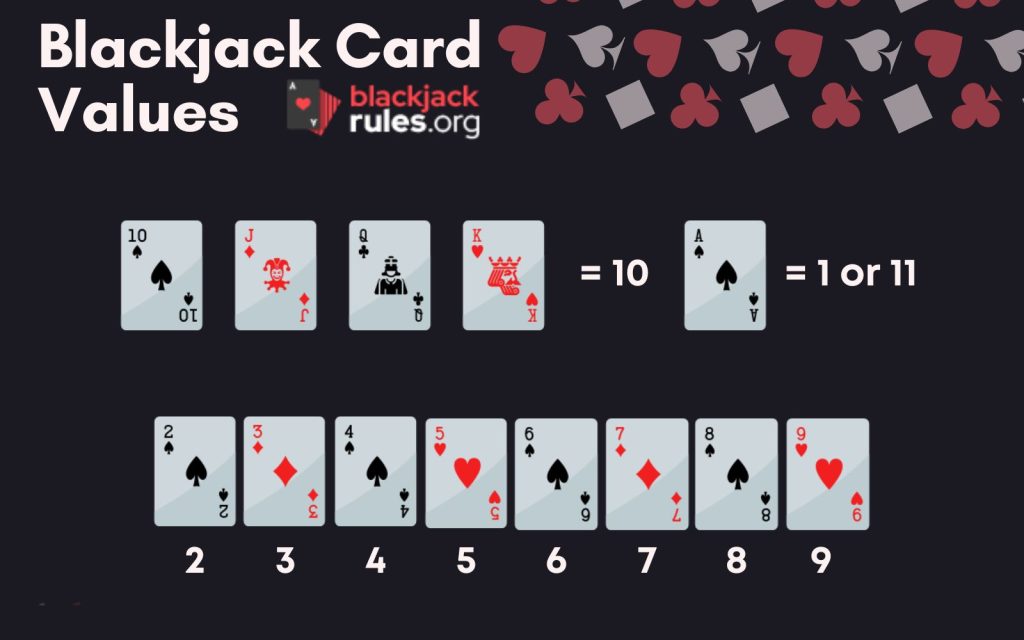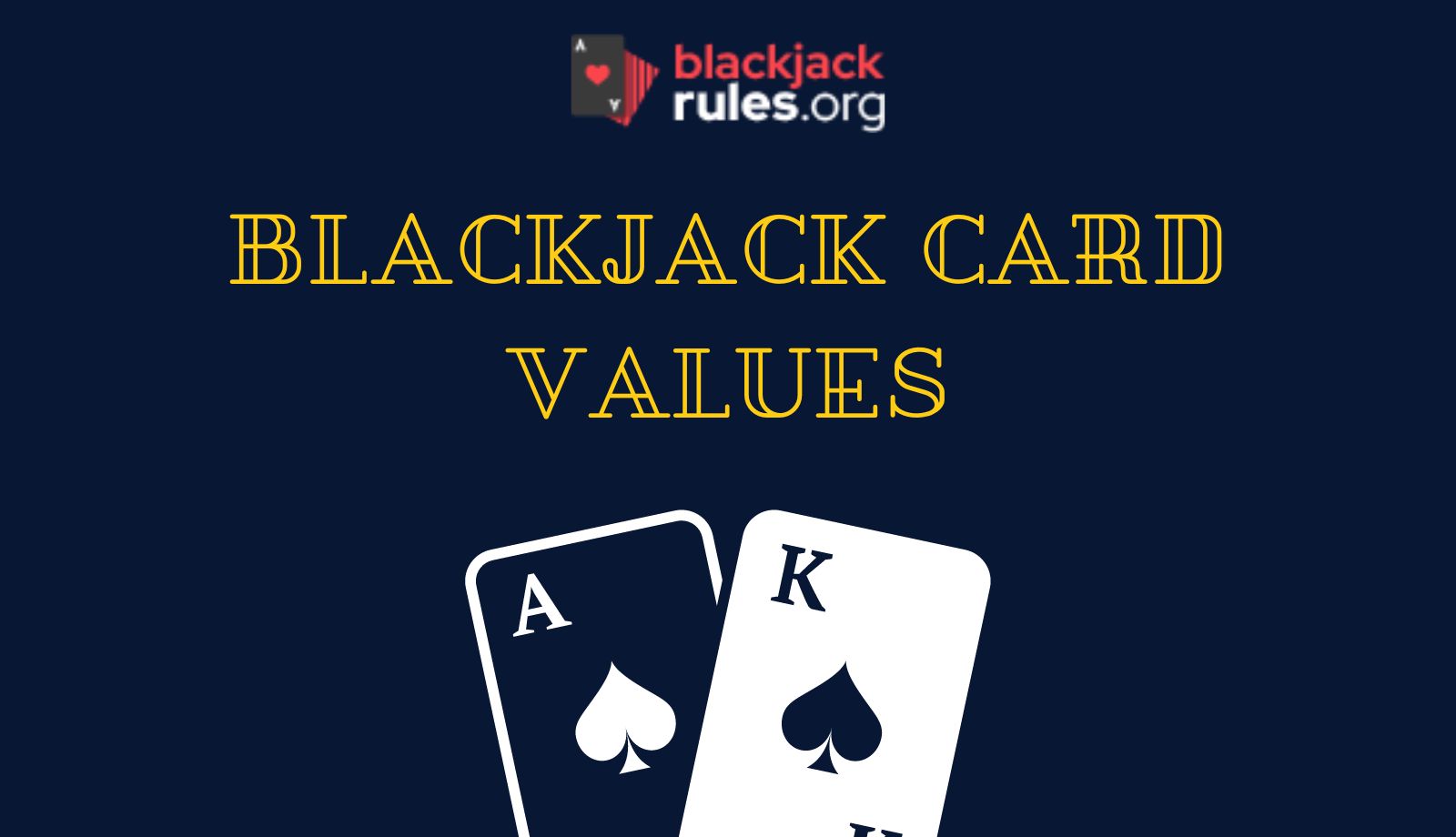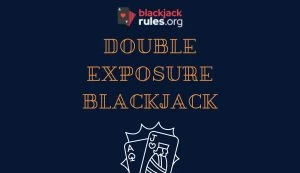In blackjack, understanding the values of each card is essential for making smart decisions and improving your chances of winning. The game revolves around reaching a hand value as close to 21 as possible without exceeding it, so knowing how each card contributes to your total is crucial.
Here’s a detailed look at the value of cards in blackjack and how they influence hand strategy.
Card Values in Blackjack

Each card in blackjack has a specific value that affects your hand total. Here’s how each type of card is valued:
- Aces: The Ace is the most flexible card in blackjack. It can be worth either 1 or 11, depending on what benefits the player’s hand most. For example, if you have an Ace and a 6, you can count the Ace as 11 to make a soft 17, but if you draw a high card like a 9, you can switch the Ace to a value of 1 to avoid busting.
- Number Cards (2-10): Cards numbered from 2 to 10 are straightforward, as they are worth their face value. A 3 counts as 3, a 7 as 7, and so on.
- Face Cards (Jack, Queen, King): Face cards hold a value of 10 each, giving them considerable power in boosting a hand’s total value quickly.
Summary of Card Values
To help visualize, here’s a summary of how each card in blackjack is valued:

An Ace is worth either One or Eleven, most Blackjack games allow you to Split Aces however you usually will only get dealt one card to split Aces.

A Two often called a Deuce is worth its face value ie. Two, a tricky card to deal with but one that offers plenty of chances when playing Blackjack.

Getting dealt a three means it is worth its face value that is three, check out all of the strategy cards for the best ways to play this card.

You may have guessed a Four is worth just that and should you get dealt a pair of fours in Blackjack Switch the only way to play them is to Hit them.

A Five is a Five and no matter how you look at it it’s one of the nastiest little cards you can get dealt, unless you get a pair of them which makes your hand much stronger.

When you are sat looking at a Six which is worth of course Six, it hasn’t many “get out” cards that can help you, so get hoping that the Dealer gives you a five also.

A Seven is worth Seven and is one of the better mid-range cards that you can be dealt in any variant of Blackjack, learn how to deal with a Seven and you’ll be OK.

Not one of the worst cards you can get but being worth Eight in value it can be tricky when you get dealt a pair of them, should you Split or should you Hit?

Nine being worth its face value of Nine can be a very strong card but always follow the correct strategy for playing it as a wrong decision will cost you.

A Ten, Jack, a Queen, or a King are all worth Ten. They are the best cards to get when playing Blackjack. Never ever split them though as good strategy says don’t.
Note that suite colors don’t play a role in Blackjack!
| Card | Value |
|---|---|
| Ace | 1 or 11 |
| 2 | 2 |
| 3 | 3 |
| 4 | 4 |
| 5 | 5 |
| 6 | 6 |
| 7 | 7 |
| 8 | 8 |
| 9 | 9 |
| 10 | 10 |
| Jack | 10 |
| Queen | 10 |
| King | 10 |
Calculating Hand Values
To determine your total hand value, simply add up the values of each card in your hand. Here are a few examples to illustrate:
- A hand with a 6 and a 7 equals 13 (6 + 7).
- Adding a 6 to this hand would bring your total to 19 (6 + 7 + 6).
Soft vs. Hard Hands
A critical concept in blackjack is the difference between “soft” and “hard” hands, especially when Aces are involved.
- Soft Hands: If a hand contains an Ace valued as 11, it’s called a soft hand. This flexibility allows you to avoid busting since the Ace can revert to a value of 1 if needed. For example, an Ace and a 6 can be counted as either 7 or 17, giving you more room to hit without risking a bust.
- Hard Hands: A hard hand has no Ace, or if it does, the Ace is valued as 1. A hard hand lacks the same flexibility, so the risk of busting is higher. For instance, if you have a 10 and a 5 (totaling 15), drawing a high card could cause you to go over 21.
Strategic Implications of Card Values
Knowing card values and how they impact your hand total is vital for strategy. In blackjack, you make decisions to hit, stand, double down, or split based on your total and the dealer’s visible card.
Here are some general strategies based on card values:
- When Your Total is Between 12 and 16: If the dealer’s face-up card is between 2 and 6, it’s typically safer to stand. The dealer is more likely to bust, so it’s wise to stay put with a weaker hand. However, if the dealer’s card is 7 or higher, consider hitting to improve your total, as the dealer has a strong chance of reaching a higher hand.
- Soft Hands Strategy: With a soft hand (an Ace counted as 11), you have a buffer against busting, allowing you to take an additional card. For example, with a soft 17 (Ace + 6), it’s often advisable to hit to increase your chances of achieving a stronger total.
- Doubling Down with Confidence: Doubling down is ideal when you’re in a strong position. For example, if you have a hand of 10 or 11, doubling down can be a good move, as your chances of hitting a high-value card (10 or face card) are favorable.
Understanding these values and the strategy they inspire allows players to make more informed decisions during gameplay. Blackjack, though partly a game of luck, rewards players who understand these fundamental principles and apply them to minimize losses and maximize wins.



